The coronation of George VI on May 12, 1937, was the first to be filmed, first to be broadcast on radio, and the first where “the colored press had fully accredited representatives at such an historic occasion.” In this blog post, take a look at archival materials that document and give insight into the historic assignment undertaken by two Black journalists for the Associated Negro Press.
In 1919, a pivotal year for race relations in both Chicago and the United Kingdom, the Associated Negro Press (ANP) was established by Claude A. Barnett (1889–1967) in Chicago. With correspondents and stringers in all major centers of Black population, the ANP provided its member papers—the vast majority of Black newspapers—with a twice-weekly packet of national and international news that gave African American newspapers a critical, comprehensive coverage of personalities, institutions, and events relevant to the lives of Black Americans. Even as a relatively young news agency, the ANP sought to establish its voice on an international level. By 1945, it had a vast international network that expanded to Africa and London, bringing global awareness to important issues within Black communities through the lens of the Black American experience, including increased attention to civil rights concerns and the fight against persistent racism.
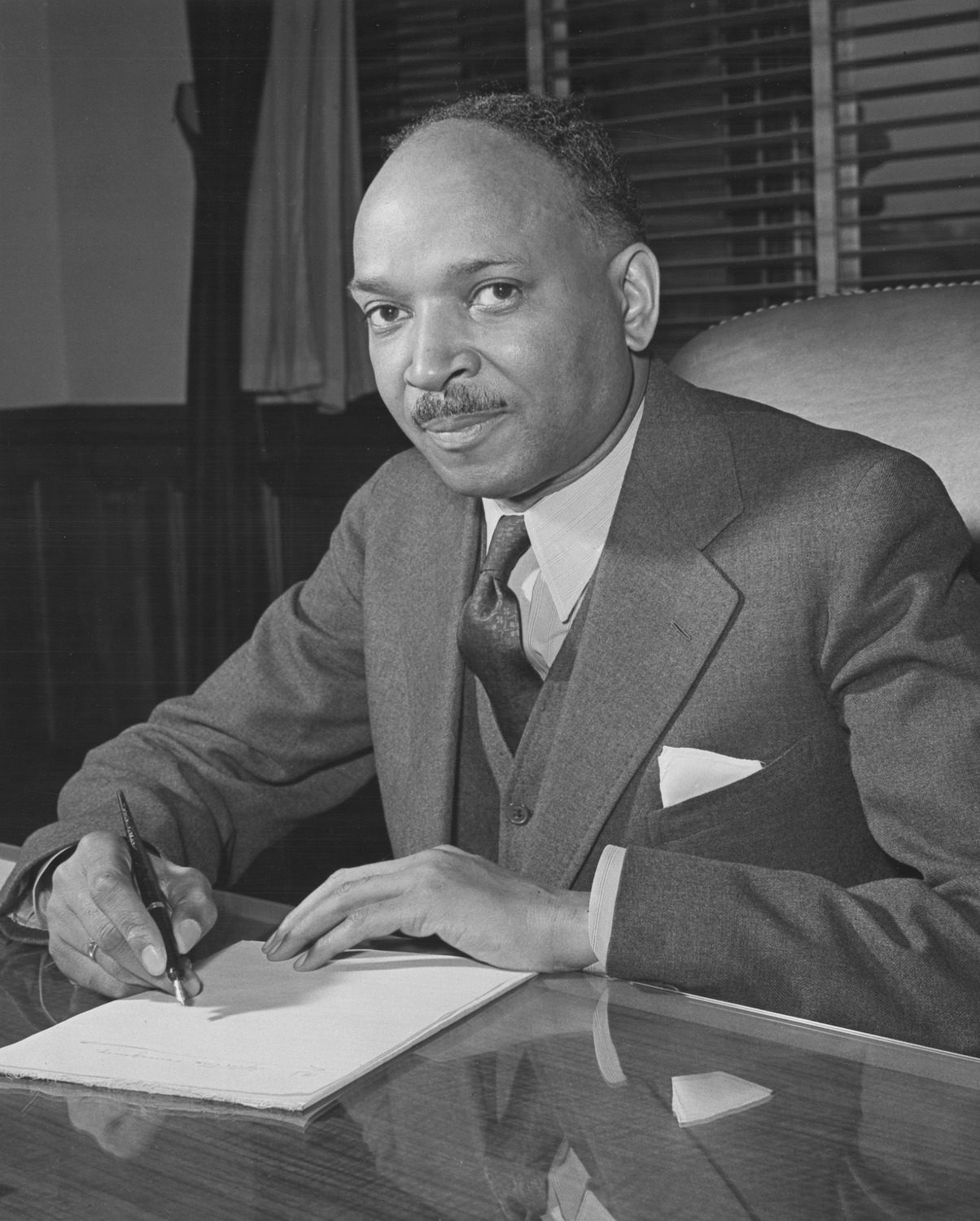
Undated photograph of Claude A. Barnett at a desk. CHM, ICHi-061826
In 1937, the ANP took strides toward expanding its international coverage through designating Fay M. Jackson (1902–1988) as foreign correspondent to Europe for six months with a central mission to cover the coronation of George VI. An ambitious and impressive force in journalism, Jackson’s precocious and straightforward writing style fore fronted her voice as a Black American journalist, a style that matched and amplified the reporting mission of the ANP.
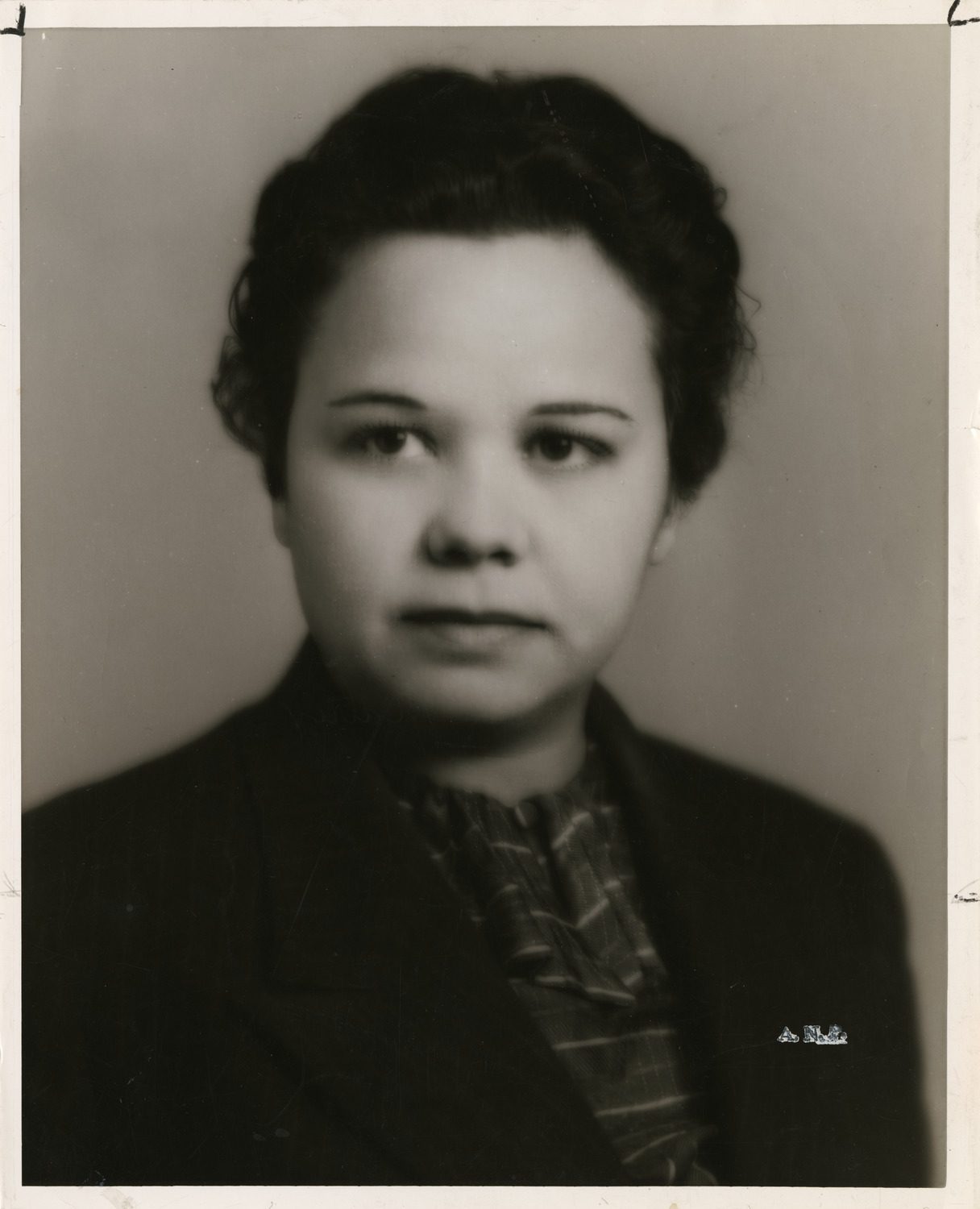
Undated portrait of Fay M. Jackson. CHM, ICHi-022288
Born in Dallas, she moved to Los Angeles with her family at the age of 14. Jackson attended Polytechnic High School (’22), where she wrote for the school newspaper, followed by the University of Southern California (’27), where she studied journalism and philosophy. While still a college student, she wrote for the California Eagle and Pacific Defender, two LA-based Black newspapers, and was critical of USC’s institutional racism, as well as the hypocrisy of having such policies while affiliated with the Methodist Church. After graduating from USC, Jackson continued her journalistic pursuits: she started Flash magazine in 1928, served as the first African American female Hollywood correspondent accredited by the Motion Pictures Director’s Association, and was named the political editor of the California Eagle in 1931.
The earliest correspondence between Fay Jackson and Claude Barnett in the CHM Research Collections dates from 1933 with Jackson asserting her abilities and being forthright about her salary expectations. Barnett, impressed by her confidence, was not put off by such grand statements, and Jackson was appointed the Pacific Coast Representative for the ANP in November 1933.
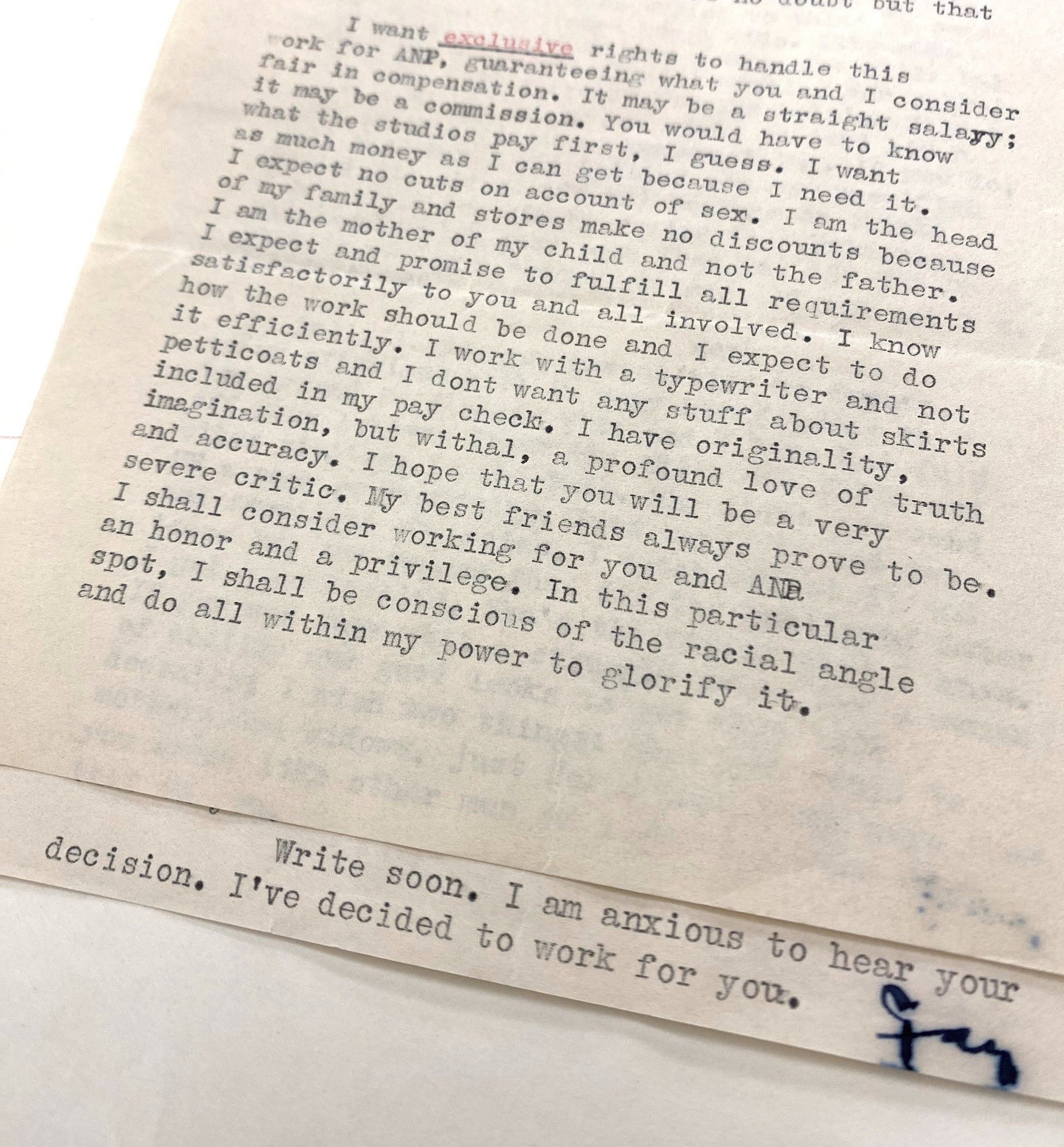
Letter from Jackson to Barnett dated August 23, 1933, in which Jackson signs off with “I’ve decided to work for you,” even before she is officially hired. Claude A. Barnett papers, 1918–67, box 287, folder 1.
In October 1936, Barnett offered Jackson the opportunity to cover the coronation of George VI with Rudolph Dunbar (1899–1988), the ANP’s London correspondent. Jackson made her enthusiasm clear in her response: “I want you to use this opportunity to build ANP as much as you can . . . Show the extent to which ORGANIZED, cooperative service can go to further the cause of better journalism. Harp on the fact that you have selected an AMERICAN girl, born and trained in our schools, with life-long dreams of reaching some of the heights reached by white kids in their chosen profession . . . Make it an inspiration to youngsters in journalism.”
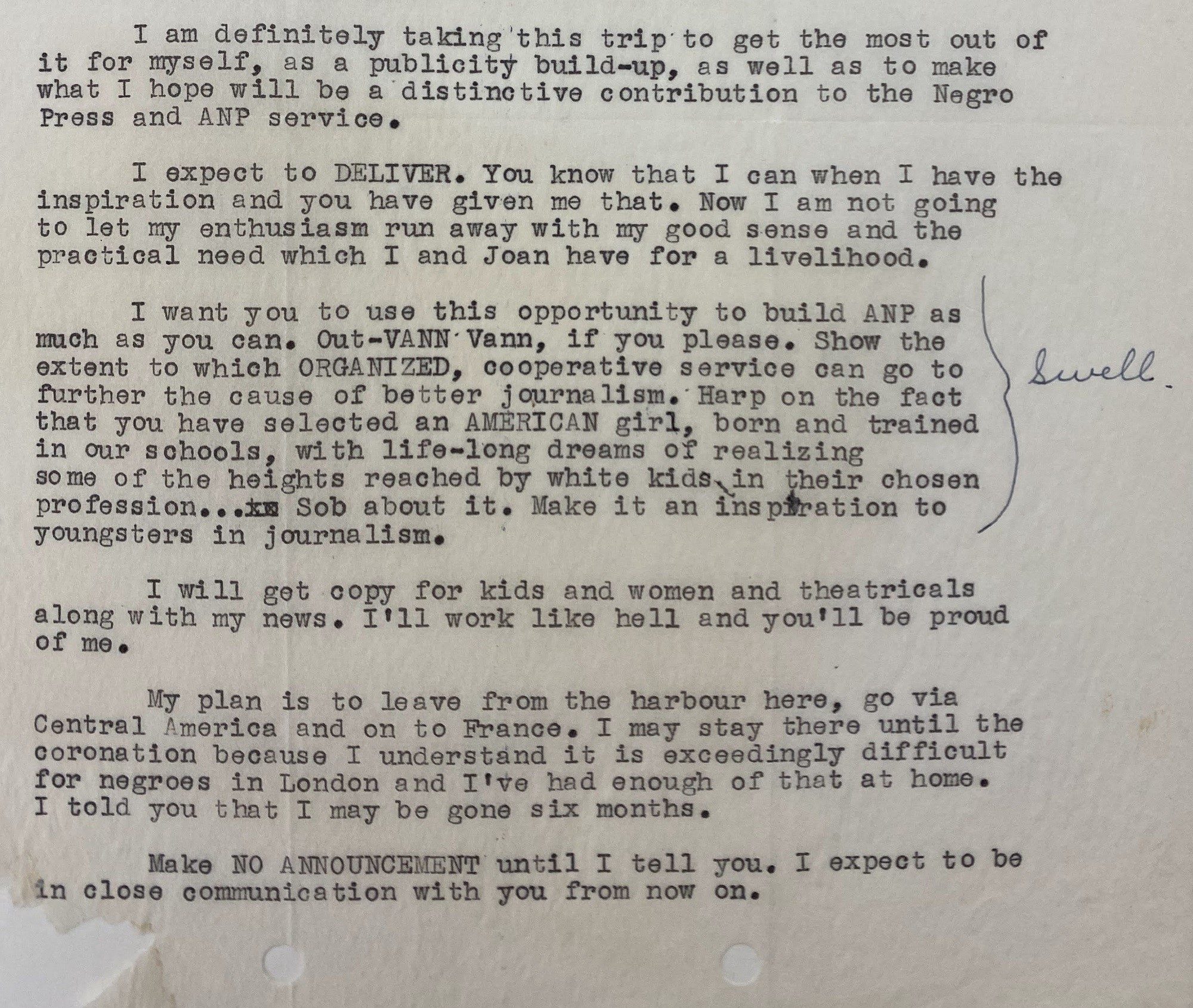
Excerpt of letter from Jackson to Barnett dated October 24, 1936, on which someone, most likely Barnett, approves of a paragraph with “Swell.” Note how Jackson describes London at the time. Claude A. Barnett papers, 1918–67, box 288, folder 1
Jackson’s coverage of the coronation came during a critical period for the United Kingdom, as the nation was transitioning from its status as the British Empire to a series of independent states known as the Commonwealth, precipitated by the 1931 Statute of Westminster just a few years earlier. Consequently, George VI’s reign would come during a decisive time both in terms of confronting the country’s status as a global power and in terms of national identity. Within just a few short years, the UK would find itself at war, and, within a decade, the process of decolonization would be accelerated as more former British colonies sought independence, including India and Pakistan in 1947.

Excerpt of correspondence from Jackson to Barnett, dated November 3, 1936.
Evidence of these underlying racial tensions painted Jackson’s perspective as she planned her itinerary. In a letter dated November 25, 1936, Jackson expressed a desire to stay longer in Paris than in London due to her hesitation about the treatment of Black people in Britain. After arrangements were made and accommodations were settled, Jackson left for Europe in early 1937 on an ocean liner from New York, traveling through continental Europe to report on the racial climate there.
As the date of George VI’s coronation approached, arrangements were made for Jackson and Dunbar to attend. A telegram to ANP a few days before the event requested payment for seats.
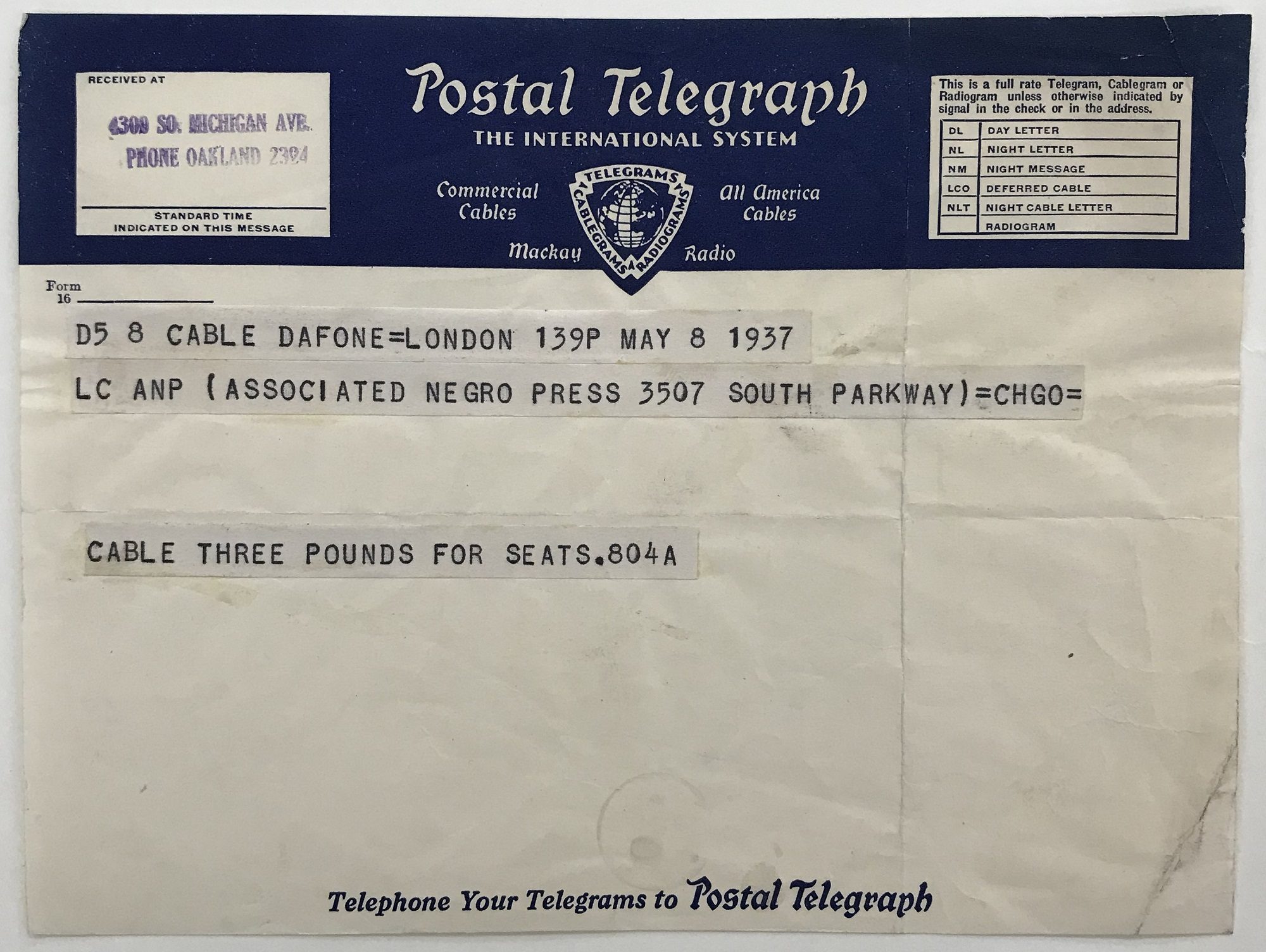
Telegram from Jackson to the ANP, May 8, 1937. According to the Bank of England inflation calculator, £3 in 1937 would be £163.59 in February 2023, which would be $202.43 today. Claude A. Barnett papers, 1918–67, box 288, folder 1.
George VI ascended to the throne in January 1936, and his coronation was the first to which African royalty were invited. However, as Jackson would report, this did not mean an equal Black representation in all elements of coronation activities.
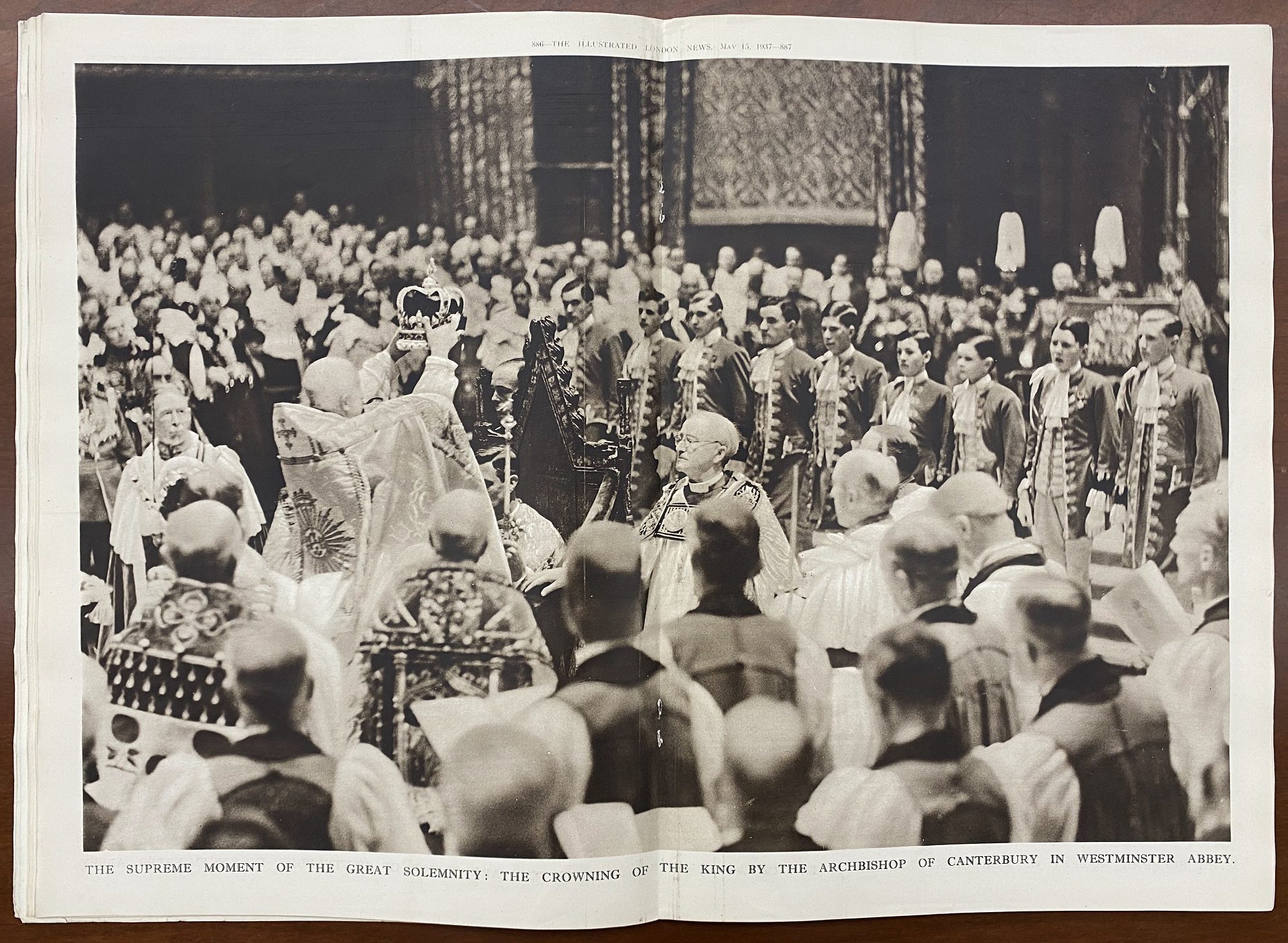
Photograph titled “The supreme moment of great solemnity: The crowning of the king by the Archbishop of Canterbury in Westminster Abbey.” The Illustrated London News, May 15, 1937, vol. 100, no. 2612. AP4.I3 FOLIO-B
The ceremony leaned into the traditional precedence set by George V’s 1911 coronation with subtle nods to the shifting status of the role of the monarch amidst the Commonwealth. Additionally, the media played a more prominent role than ever before in a coronation ceremony.
In Rudolph Dunbar’s dictum regarding the day of the coronation, his editor’s note states that he “and Miss Fay Jackson were the only Negro reporters occupying the special and exclusive stations in Westminster Abbey. It was the first time in history that the colored press had fully accredited representatives at such an historic occasion.”
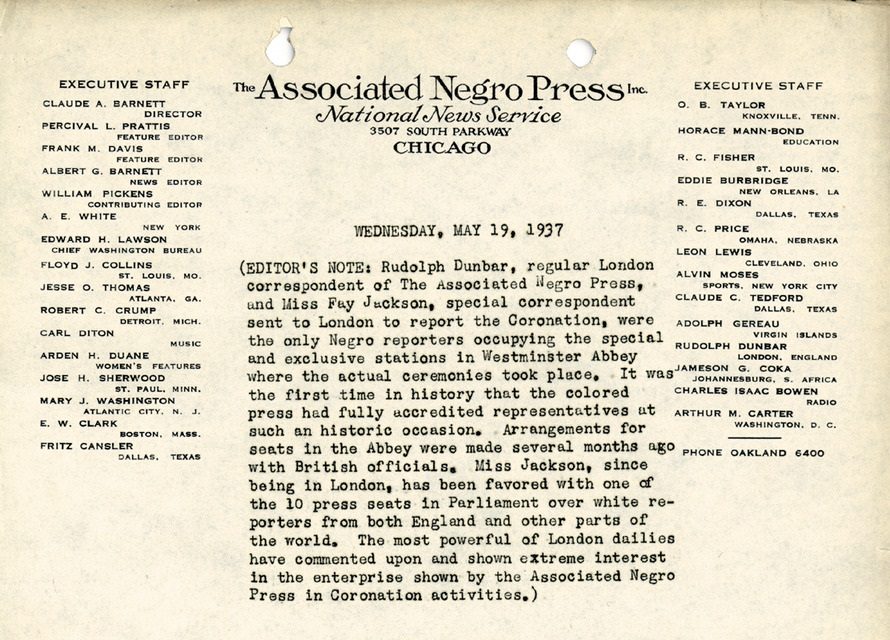
The top half of a release regarding the coronation of King George VI, May 19, 1937. CHM, ICHi-068441
Jackson reported with a critical eye on not just what took place during but also obvious omissions to the coronation festivities. Her accounts recall how the African heads of state and Black dignitaries were treated unfairly. In one of her stories, she notes, “While 22 of the States and Mandated territories under His Majesty’s protection are black with a combined population of some 400 million, it may be clearly seen that nothing like the representation of blacks by black is here as, for instance, one notes among the Indians and other races . . . No Black Africans appear on the Royal Guest list. It will be recalled that the Chieftains were actually snubbed, originally, because the present King chose to follow the ‘precedent set down by his father, the late King George V.’ Two are here: Yeta III, Paramount Chief of Barotseland, and Ademola II, Alake of Abeokuta. They are included in the last as ‘distinguished visitors.’”
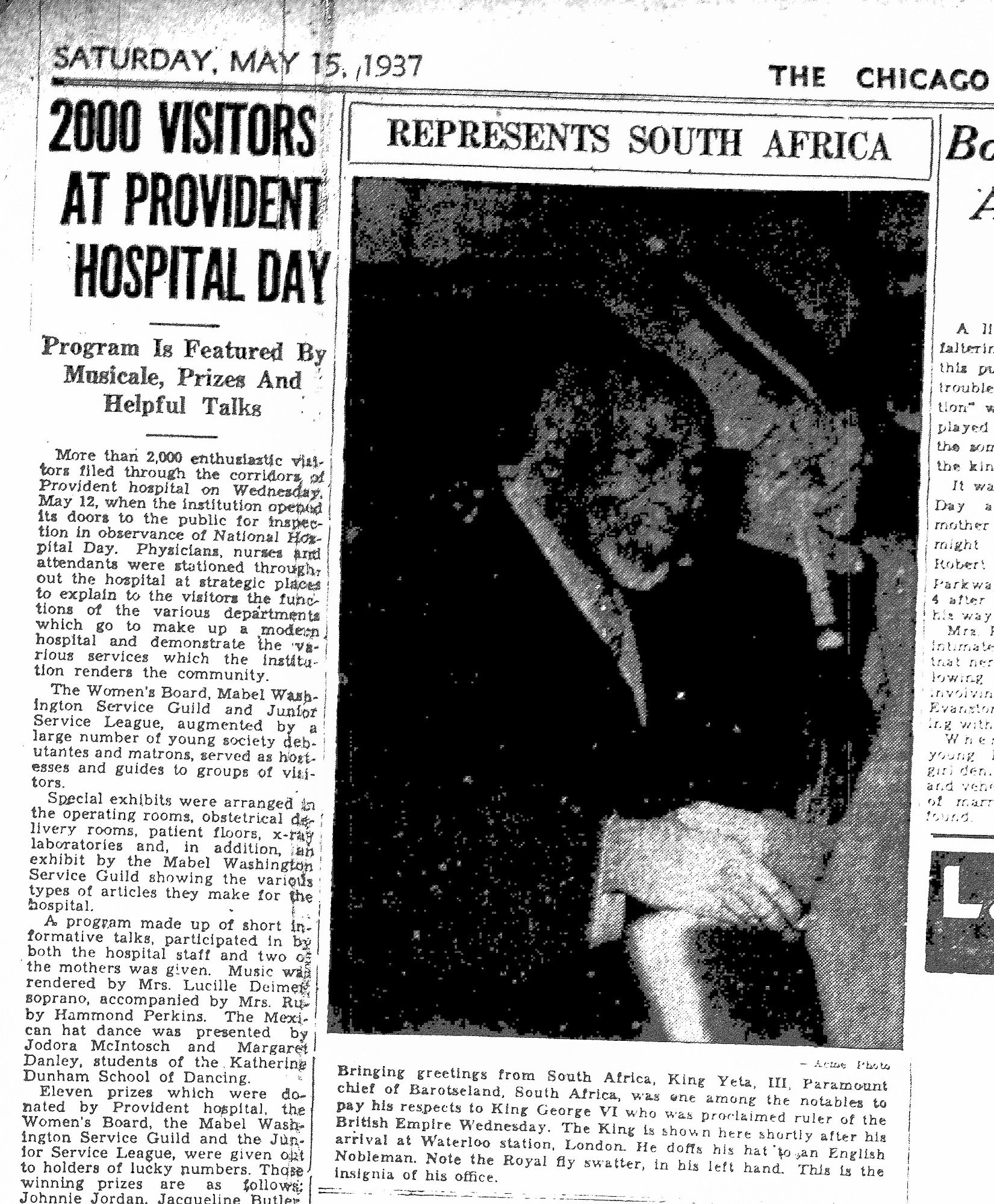
A photograph of King Yeta III, Paramount Chief of Barotseland, South Africa, arriving at Waterloo Station in London. He carries a fly swatter, the insignia of his office. Chicago Defender, Saturday, May 15, 1937, city edition.
Another example of the omission of Black presence was the news coverage. In The Illustrated London News, the only African leaders pictured are the Sultan of Zanzibar and white colonial leaders such as J. B. M. Hertzog, and the only foreign delegates pictured hail from Europe, Asia, and the Americas.
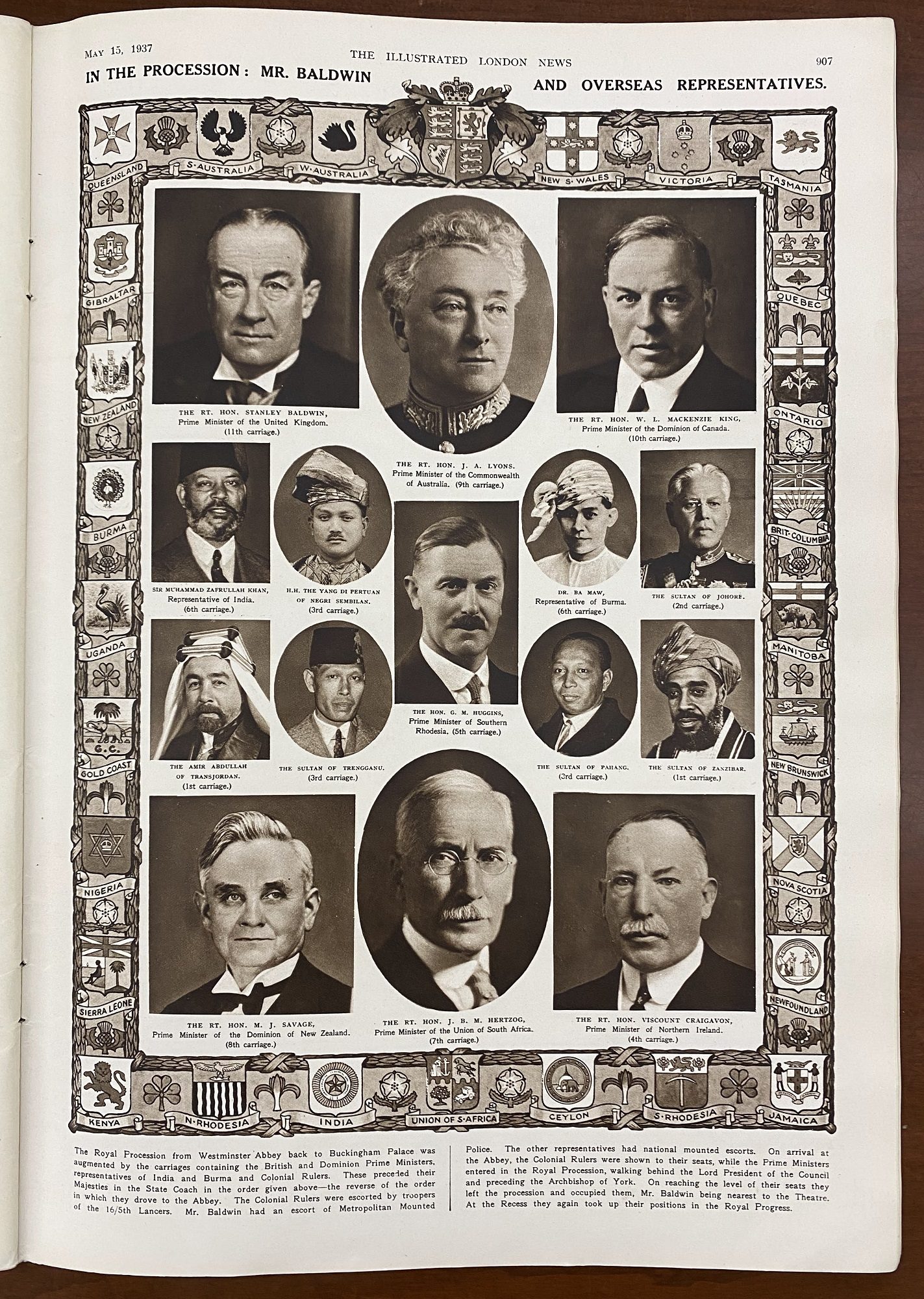
The Illustrated London News, May 15, 1937, vol. 100, no. 2612. AP4.I3 FOLIO-B
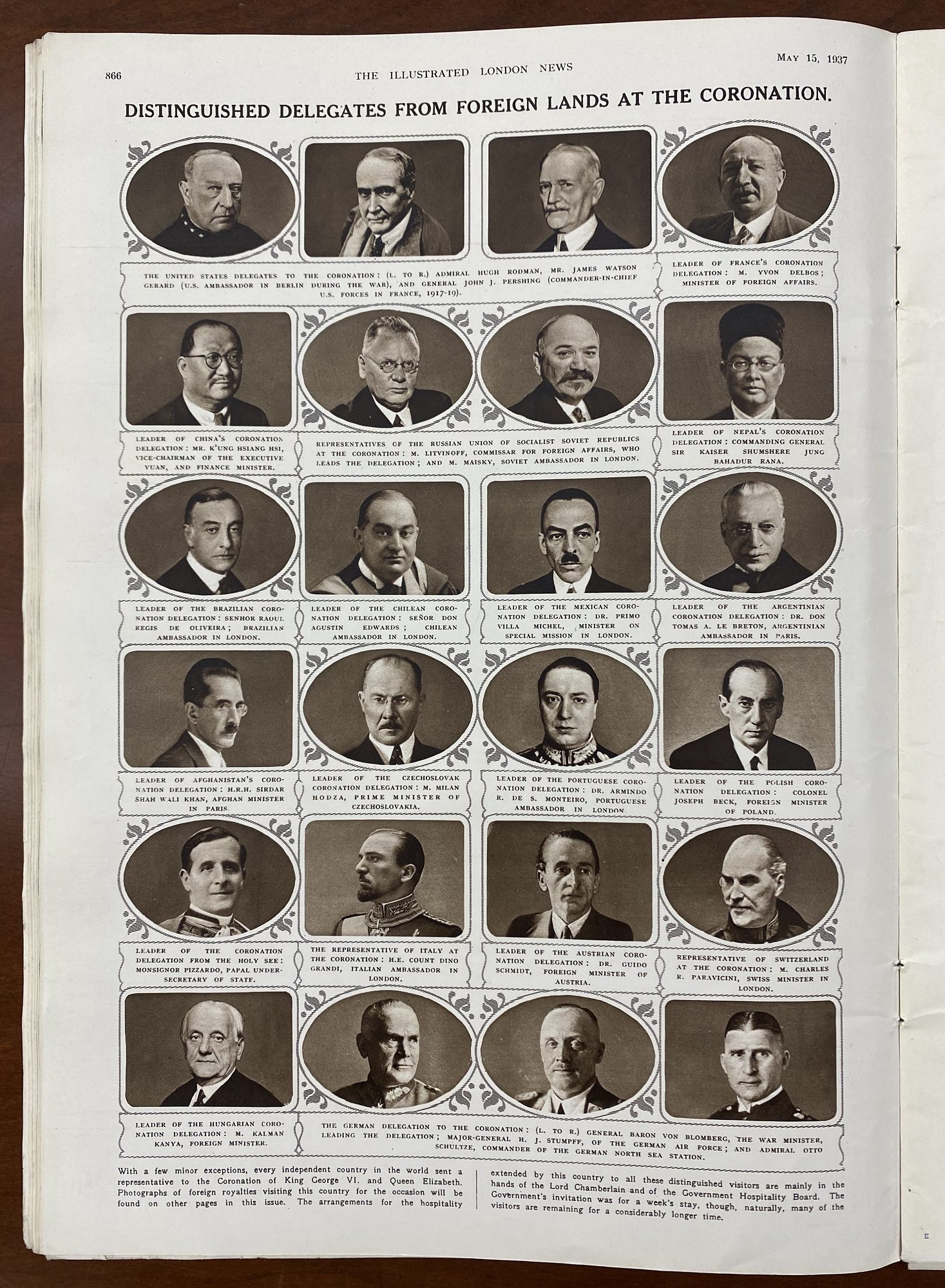
In a cablegram Jackson sent to the ANP on May 13, 1937, she relays her observations of how Black dignitaries were treated: “. . . the coronation procession of King George VI gave Africa the poorest showing of all the countries represented. Among thirty thousand troops from Canada, New Zealand, India, the Union of South Africa, Malay, the West Indies and other members of the Colonial and Protectorate territories, only 25 barefoot native blacks marched at the tailend [sic] of the colonial contingent but the applause that greeted them was rivaled only by the deafening accalamation [sic] given to the majestic Indians who completely stole the show, even from Britain’s Navy men . . . The King’s escort of officers from the Colonial contingents contained no black faces, and African representatives, or distinguished visitors were shunted into the rear of a stand facing Buckingham where they could see little of the procession.”
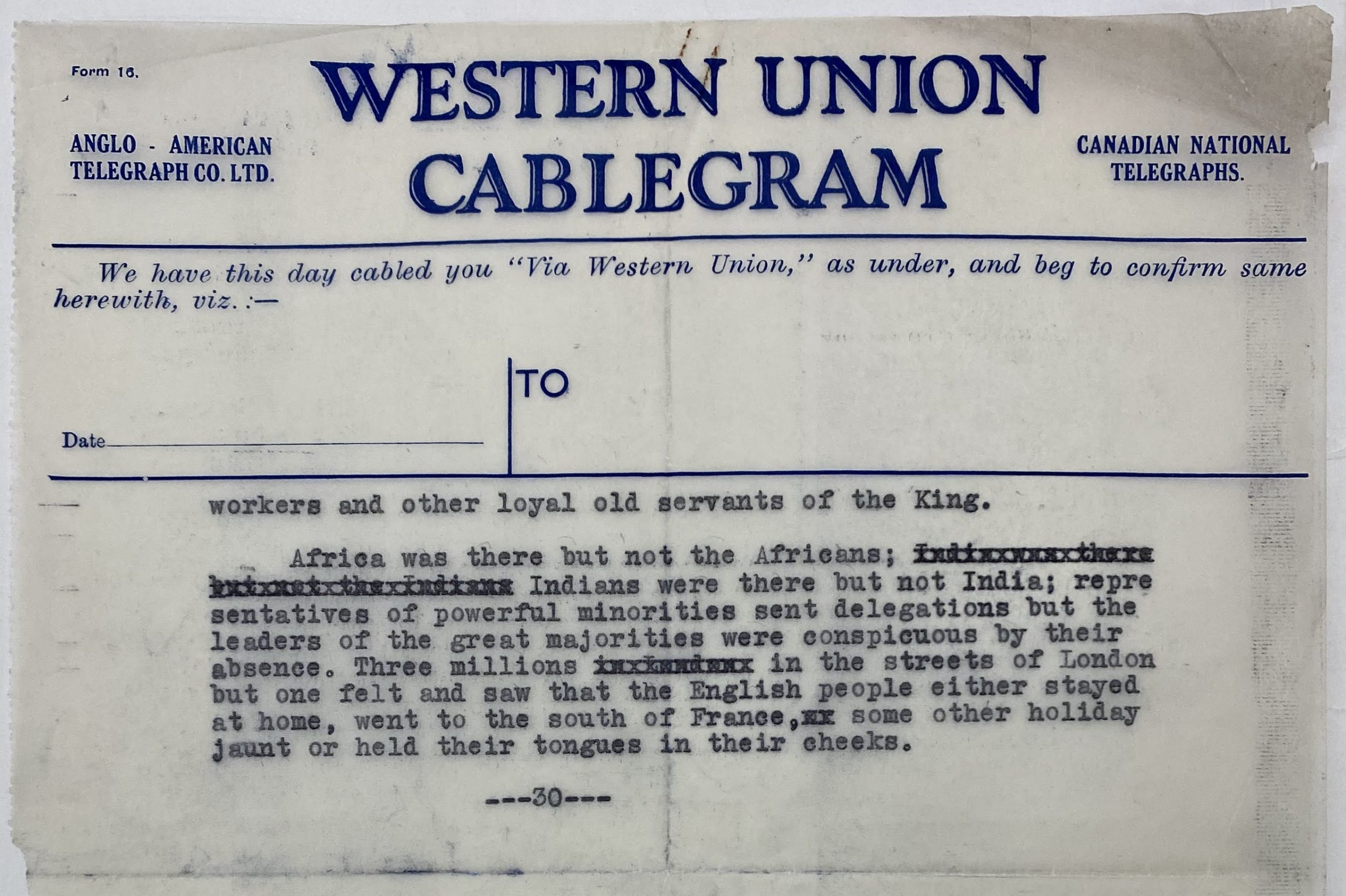
A cablegram from Jackson to Barnett, May, 13, 1937.
She continues with: “Africa was there but not the Africans; Indians were there but not India; representatives of powerful minorities sent delegations but the leaders of the great majorities were conspicuous by their absence.”
Fay Jackson’s reports were published in major Black newspapers in the US, including the California Eagle, and earned her praise. In a letter from Barnett to Jackson, he writes: “You have done a grand job and we are very proud of you. I suspect the acclaim to which the papers have hailed your exploit[s] and the personal appreciation which must be in the minds of thousands of folk throughout the country, will be some measure of compensation because, of course, our contribution is a mere mite outside of the channel of service in enabling you to do what you aspired to accomplish. It leaves you the No. 1 Negro newswoman anyway.”
Coauthored by CHM curator of religion and community history Rebekah Coffman and CHM content manager & editor Esther D. Wang.
Additional Resources
- Learn more about the Claude A. Barnett papers [manuscript], 1918–67, at the Abakanowicz Research Center, which is free to visit
- Read more about Fay Jackson’s reporting partner, Rudolph Dunbar, whose papers are housed at Yale University’s Beinecke Rare Book & Manuscript Library